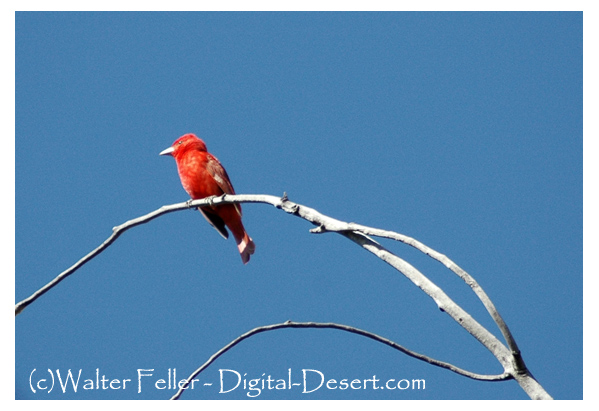Summer Tanager

The Summer Tanager (Piranga rubra) is a colorful bird found in North and South America. It is a medium-sized songbird belonging to the cardinal family (Cardinalidae).
Here are some key features and information about the Summer Tanager:
Appearance:
Male: During the breeding season, male Summer Tanagers are a striking, brilliant red all over, including their plumage, beak, and legs. Female: Females and non-breeding males are more subdued in color, displaying a yellowish-green to olive color.Habitat:
Summer Tanagers can be found in a variety of habitats, including deciduous and mixed woodlands, orchards, and open woodlands near water.Range:
They are native to North and South America. During the breeding season, they are found in the southern United States and parts of Mexico, while in the winter, they migrate to Central and northern South America.Behavior:
Summer Tanagers are known for their foraging habits. They primarily feed on insects, but they also eat fruits and berries, especially during the winter months.Song:
The song of the Summer Tanager is a series of musical phrases, often described as a distinctive, robin-like warble. They are generally more heard than seen due to their habit of singing from concealed perches.Breeding:
They build cup-shaped nests in the fork of a tree, typically using twigs, grasses, and other plant materials. The female usually lays a clutch of 2-5 eggs, which she incubates for about 12-13 days.Migration:
Summer Tanagers are migratory birds, and their migration patterns can vary. They generally migrate to warmer regions during the winter months. Observing a Summer Tanager, especially the bright red male during the breeding season, is a treat for birdwatchers and nature enthusiasts. Keep in mind that their appearance can vary depending on factors such as age, sex, and season.Their breeding habitat is open wooded areas, especially with oaks, across the southern United States. These birds migrate to Mexico, Central America and northern South America.
These birds are often out of sight, foraging high in trees, sometimes flying out to catch insects in flight. They eat some berries, but mainly insects, especially bees and wasps.